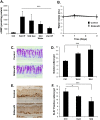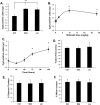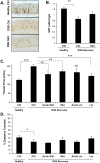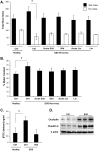Sildenafil normalizes bowel transit in preclinical models of constipation
- PMID: 28448580
- PMCID: PMC5407793
- DOI: 10.1371/journal.pone.0176673
Sildenafil normalizes bowel transit in preclinical models of constipation
Abstract
Guanylyl cyclase-C (GC-C) agonists increase cGMP levels in the intestinal epithelium to promote secretion. This process underlies the utility of exogenous GC-C agonists such as linaclotide for the treatment of chronic idiopathic constipation (CIC) and irritable bowel syndrome with constipation (IBS-C). Because GC-C agonists have limited use in pediatric patients, there is a need for alternative cGMP-elevating agents that are effective in the intestine. The present study aimed to determine whether the PDE-5 inhibitor sildenafil has similar effects as linaclotide on preclinical models of constipation. Oral administration of sildenafil caused increased cGMP levels in mouse intestinal epithelium demonstrating that blocking cGMP-breakdown is an alternative approach to increase cGMP in the gut. Both linaclotide and sildenafil reduced proliferation and increased differentiation in colon mucosa, indicating common target pathways. The homeostatic effects of cGMP required gut turnover since maximal effects were observed after 3 days of treatment. Neither linaclotide nor sildenafil treatment affected intestinal transit or water content of fecal pellets in healthy mice. To test the effectiveness of cGMP elevation in a functional motility disorder model, mice were treated with dextran sulfate sodium (DSS) to induce colitis and were allowed to recover for several weeks. The recovered animals exhibited slower transit, but increased fecal water content. An acute dose of sildenafil was able to normalize transit and fecal water content in the DSS-recovery animal model, and also in loperamide-induced constipation. The higher fecal water content in the recovered animals was due to a compromised epithelial barrier, which was normalized by sildenafil treatment. Taken together our results show that sildenafil can have similar effects as linaclotide on the intestine, and may have therapeutic benefit to patients with CIC, IBS-C, and post-infectious IBS.
Conflict of interest statement
Figures






References
-
- Drossman DA (2016) Functional Gastrointestinal Disorders: History, Pathophysiology, Clinical Features, and Rome IV. Gastroenterology 150: 1262–1279.e1262. - PubMed
-
- Dunlop SP, Coleman NS, Blackshaw E, Perkins AC, Singh G, Marsden CA, et al. (2005) Abnormalities of 5-hydroxytryptamine metabolism in irritable bowel syndrome. Clin Gastroenterol Hepatol 3: 349–357. - PubMed
-
- Coates MD, Mahoney CR, Linden DR, Sampson JE, Chen J, Blaszyk H, et al. (2004) Molecular defects in mucosal serotonin content and decreased serotonin reuptake transporter in ulcerative colitis and irritable bowel syndrome. Gastroenterology 126: 1657–1664. - PubMed
MeSH terms
Substances
Grants and funding
LinkOut - more resources
Full Text Sources
Other Literature Sources
Medical
Miscellaneous

